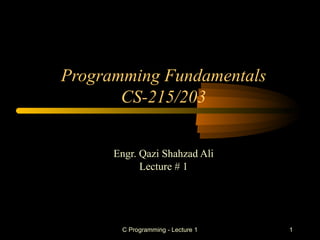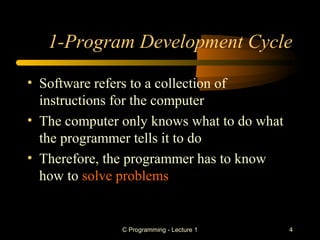C is a general-purpose programming language developed in the 1970s. The lecture discusses C's history and uses, and outlines the typical program development cycle of requirement analysis, design, implementation, testing, and documentation. It also introduces common programming tools like algorithms, pseudocode, flowcharts, and hierarchy charts to plan and design programs before coding.
















































